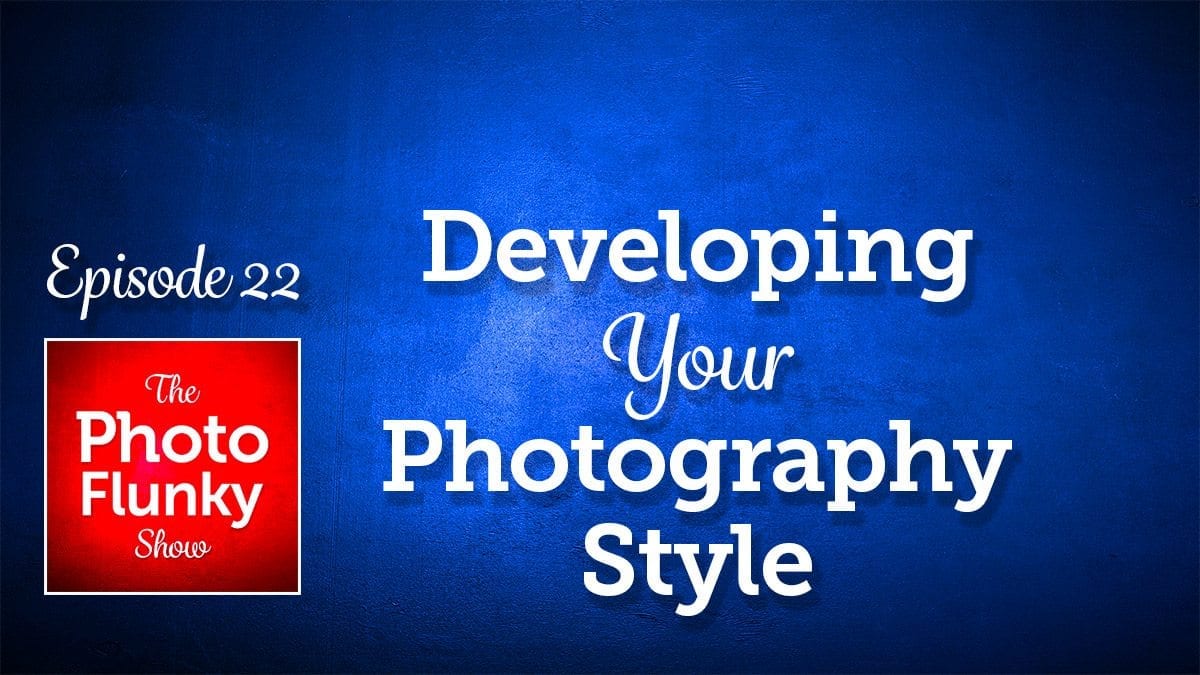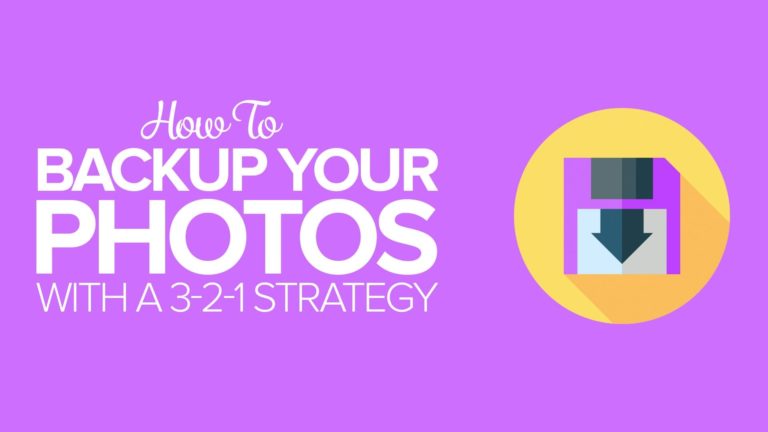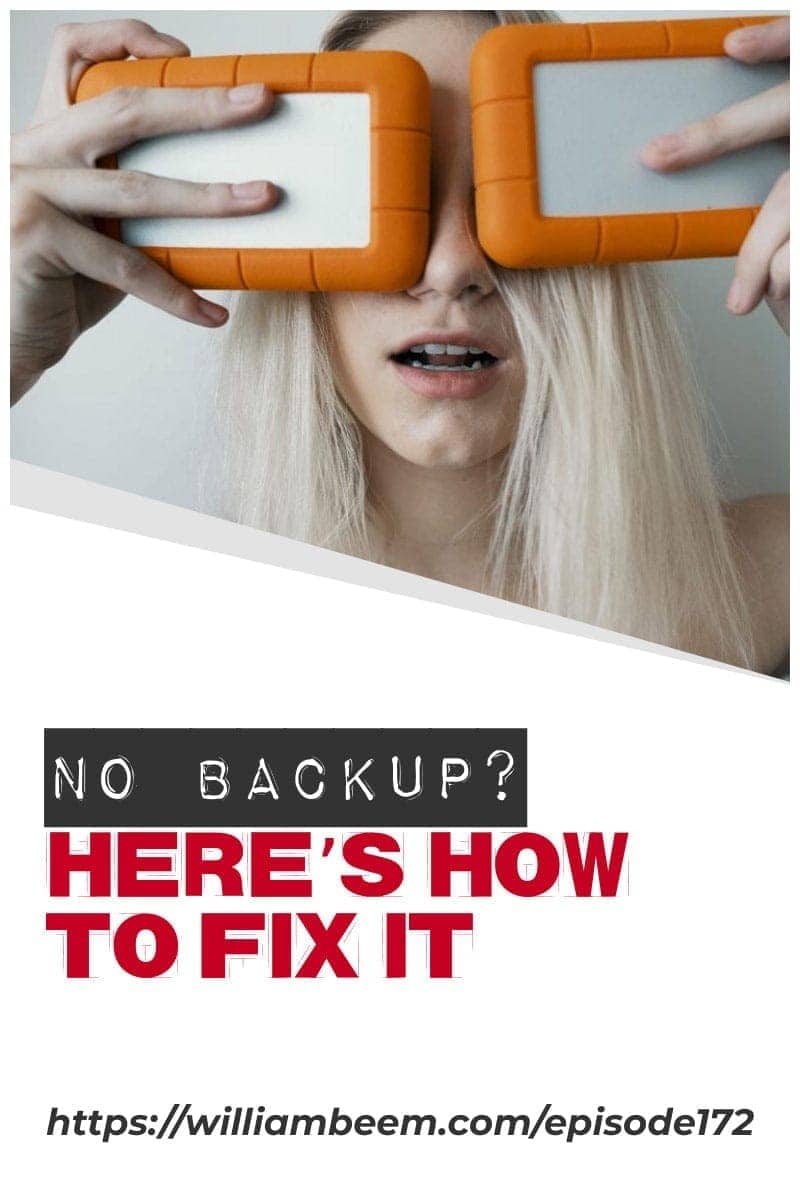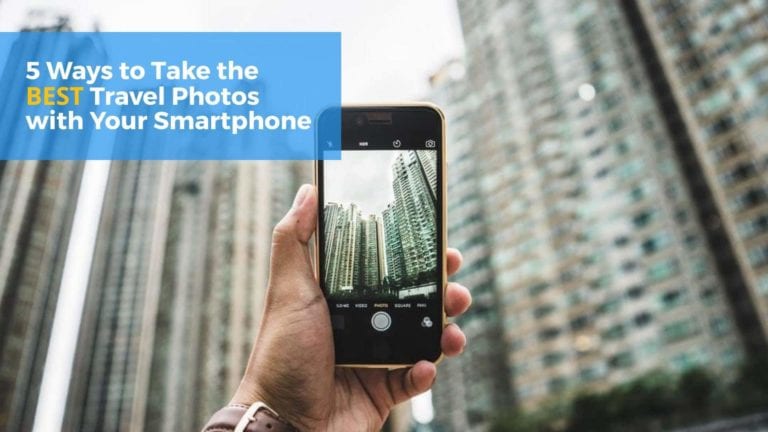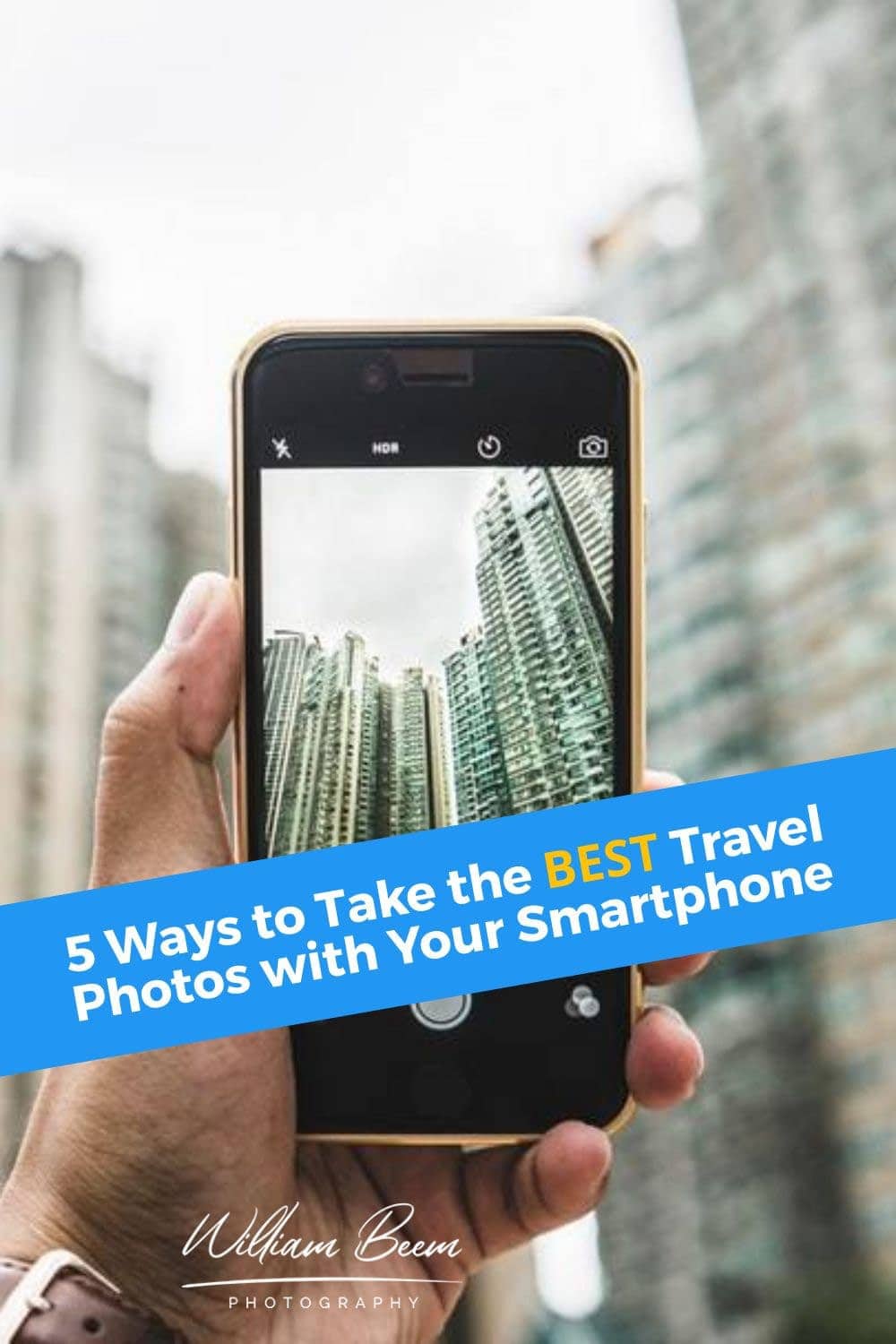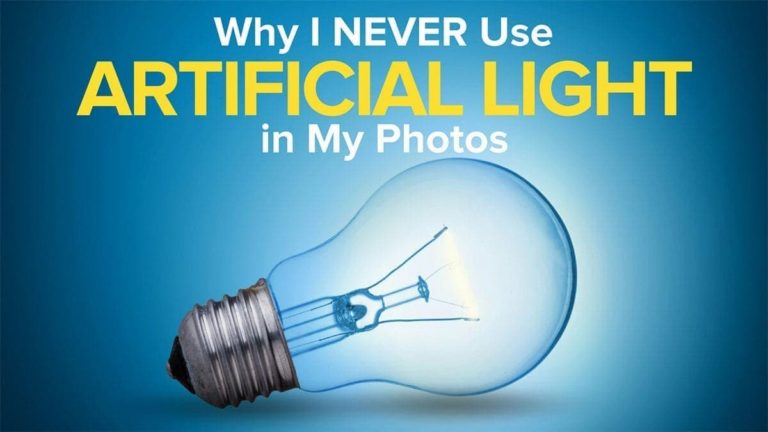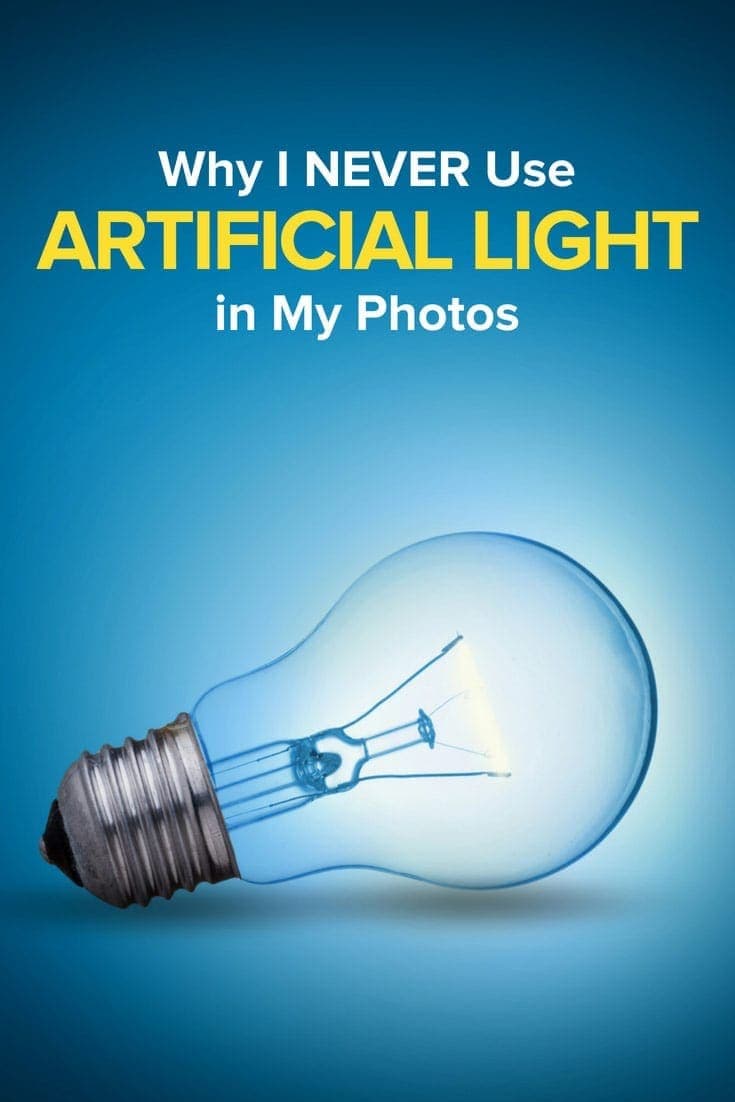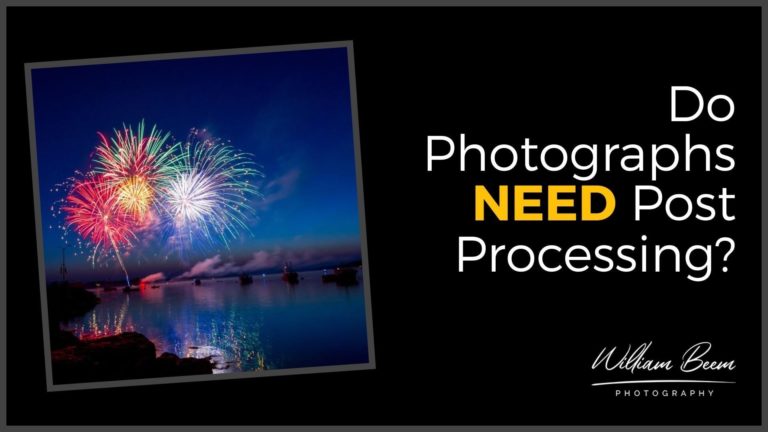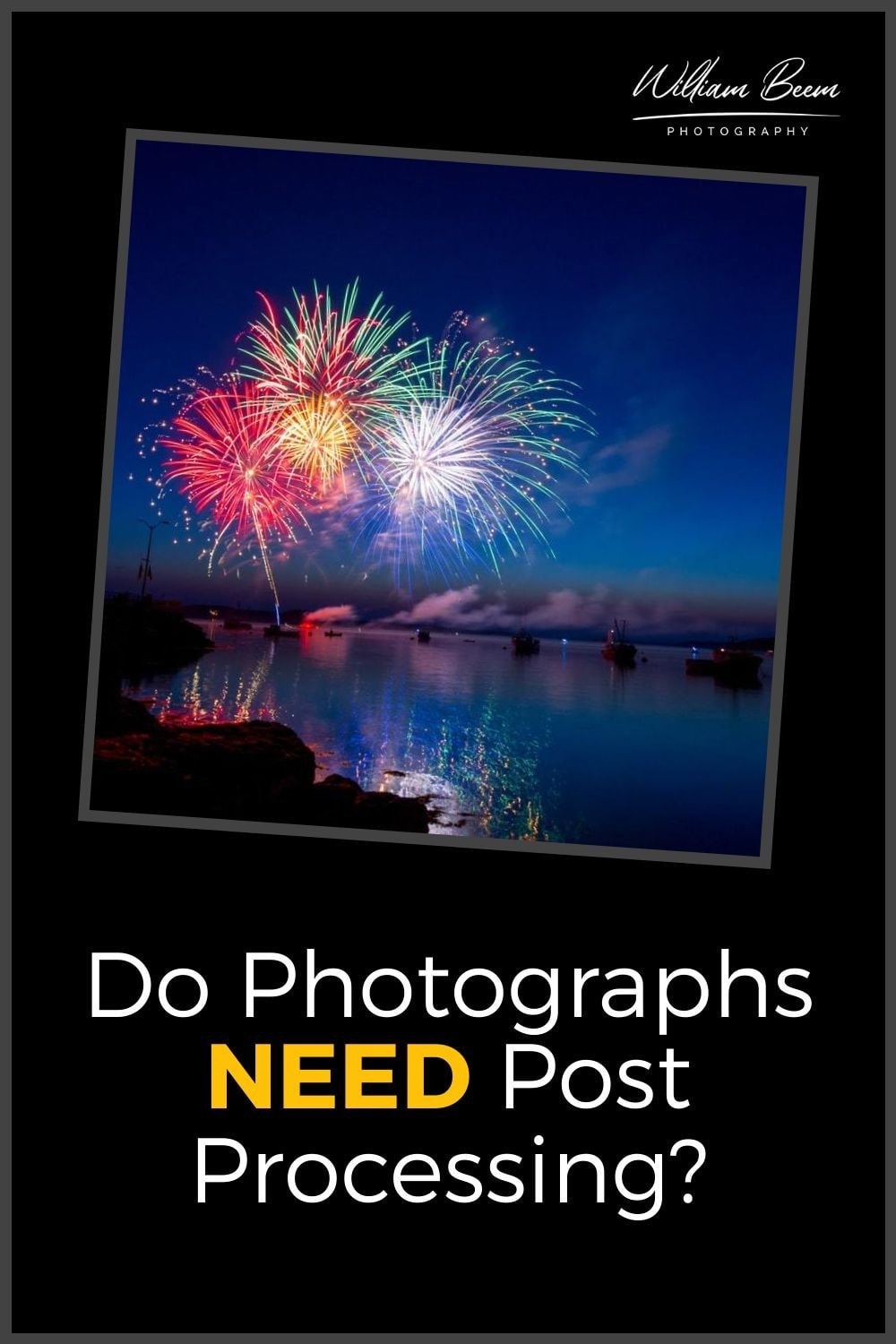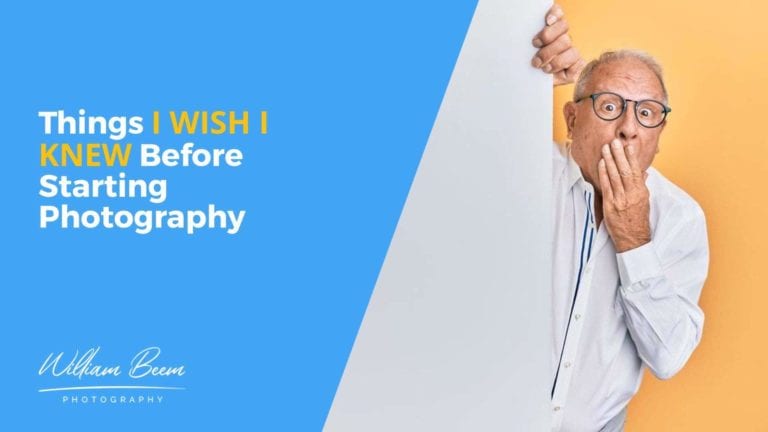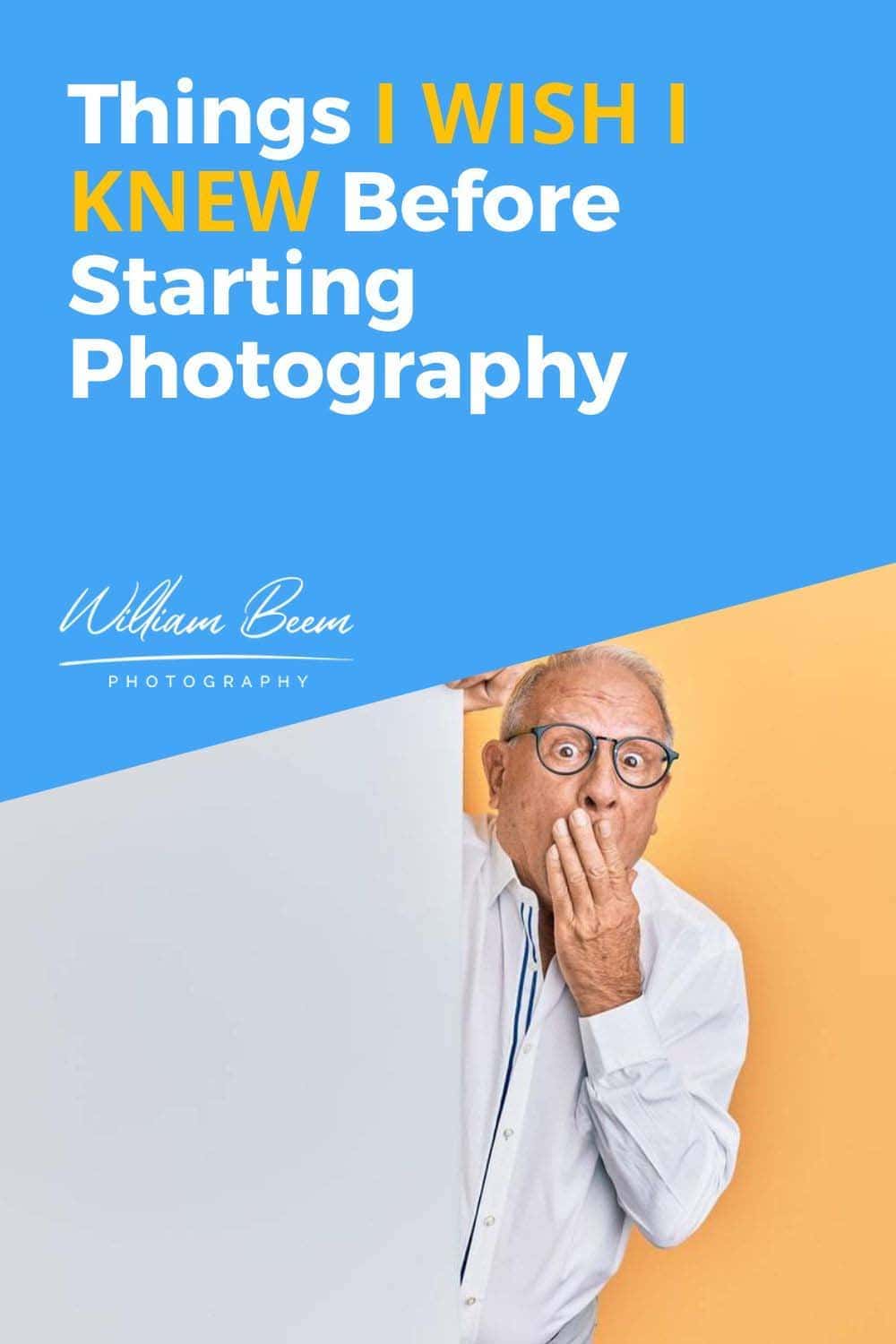Affiliate Disclosure: We earn a commission if you purchase through one of our links at no additional cost to you.
Get Started Developing Your Photography Style
Welcome to episode 22 of The Photo Flunky Show.
On this episode, we talk about the journey some photographers take to develop their own style, whether they do it consciously or it just seems to happen without any planning.
Your photography style is more important than any gear or software you’ll ever buy, yet those things are tools you can use to develop your photography style.
I also mention some discounts for ON1 and Macphun software in this episode. You can save some money on some quality post processing tools that could become part of your photography style.
Related Links
Home Studio Setup for Portrait Photography
Macphun Coupon Code
I mentioned at the start of the show that you can save 10% (or $10) on Macphun software using my coupon code. This is my affiliate code, which means that I make a small commission if you purchase from me, but it also means that you save money.
For Macphun products like Luminar and Aurora HDR, you save $10.
For other Macphun products, like the Creative Kit, you save 10%.
Just visit: https://williambeem.com/macphun
When you check out, use my Macphun coupon code: BEEM
ON1 Coupon Code
ON1 Photo RAW is a fantastic program to help you develop your style. As with the Macphun code above, I earn a small commission if you purchase from me, but it also means you save 20%.
Just visit https://williambeem.com/on1 and enter the code WBEEM16 to save 20%when you check out.
Subscribe to The Photo Flunky Show
Thank you for listening to The Photo Flunky Show. Make sure you get every episode by subscribing.
iTunes – https://williambeem.com/itunes
Stitcher – https://williambeem.com/stitcher
Google Play – https://williambeem.com/googleplay
Blubrry – https://williambeem.com/blubrry
Social Media Links
We love seeing your photos and keeping in touch with you on social media. Here’s where you can find us.
Transcript
PHOTO FLUNKY: Episode 22
Welcome to the Photo Flunky Show, Episode number twenty-two.
Today we’re going to be talking about developing your photography style.
William: Hi, thanks for joining us on the Photo Flunky Show. My name is William Beem.
Lee: Hi, I’m Lee.
William: And just so you know, you can find show notes for this episode available at williambeem.com/episode22 and you can find a transcript of the show there for free.
Also, we’re now available on iTunes, Stitcher Radio and Google Play Music Podcast. Anyways, we’re out there and if you go to photoflunky.com I’ve got a link out there and there are also links in the show notes, so we would love it if you would go there and subscribe to the show. And of course we would appreciate your rating and review.
Before we get started, I’ve got a little bit of news. The nice folks over at OnOne gave me a new discount code. It’s worth 20% off so if you’re looking for some great quality post processing software, go to williambeem.com/onone and use the code WBEEM16 and you get a 20% discount for doing that. I hope that helps you out and of course we do get a little bit of a cut from that. There is no extra cost to you. In fact, it’s saving you twenty percent so we appreciate it very much.
Alright, let’s get on with today’s episode about developing your photography style. I did a blog post on this and I’ll put that in the show notes, but one of the things that I kind of delved into was the stuff that gets you into photography in the first place. So Lee, what was it that actually kind of drove you to want to get into photography?
Lee: It was taking baby photos. It wasn’t anything that I was doing to be a photographer. I just wanted to capture memories and be able to preserve them somehow and that kind of grew as she got older and I started to become more interested in getting nicer quality photos and it all took off from there.
William: In my case I started when I was in high school. Back in film days I had an Olympus OM10 camera and I really loved taking photos, but I had no idea why and honestly, I can’t say that I was very good at it. I didn’t know enough about the proper gear to get. My idea with getting more focal length was to buy doublers and so if I had a 50mm lens and I wanted 100mm lens, I’d put on a 2X doubler; if I wanted at 200mm lens, I put on another 2X doubler. And it didn’t really work out very well, but it that was my way of starting off.
I was convinced that I was going to go to photography school and of course, I didn’t; I ended up going into an IT career.
Then later on I got back into photography when I took a trip to Alaska and I thought, this is a perfect time to get back in. I’m going someplace I may never visit in my life again, there’s beautiful scenery up there and I want to capture it. My gear just didn’t work. I ended up only using a point and shoot camera.
Have you ever tried to shoot a whale that’s breaching out of the water and going back in with an early 2000’s point and shoot camera? The word shutter –lag was something I discovered!
Lee: Oh, yeah. Try it at an air show as well!
William: Exactly! So you see the whales going up, you see the tails going down and as soon as there is just rings in the water, that’s when the shutter would finally click. And I thought, alright, this can’t do. I need to be able to take better photos!
And that’s when I went out and got my first DSLR. And again, I didn’t really know anything other than this was for vacation travel. I was just taking snapshots and preserving memories, but it started building from there.
Lee: Yeah, I also started with a bit of landscapes and travel shots and things like that and I think because my Dad – he’s not a photographer, but he always liked his snapshots – he’s really into his scenery and mountains and landscapes and things. My brother is very good with his photography and he also takes some beautiful landscape photos so that was the only exposure and kind of coaching that I had. I took lots of landscape photos. I’d print them and then I’d stash them away in a drawer somewhere and never look at them because truthfully, I don’t care about landscapes.
But that was a starting point for me.
William: I kind of did the same thing. I was taking photos for travel and vacation and I wanted to try and get better at it. I wanted to bring back some of the visual stuff that I saw that I thought was very impressive and I remember I was taking trips to Las Vegas and from Las Vegas I would go up to Zion National Park, which is a beautiful park, if you go at the right time of year.
I happened to go to Las Vegas for Christmas and then took a trip up to Zion for a few days and of course it was wet, it was snowing and the trees were all bare. I was out there taking pictures left and right and just having a wonderful time, except for when I slipped on the snow and fell on my butt! But other than that, I’m taking these pictures and there are a lot of iconic shots from Zion National Park and I went back and looked at my photos versus those photos and I realized, OK, I’m not good at this because my photos don’t look anything at all like yours. It’s very bare, it’s just not good. My composition was horrible; my post processing was almost non-existent. The folks that were up there at the Park Ranger’s office were very nice and kind to me, saying, “Ooh, ahh” and all that stuff. And they were probably thinking, yeah kid just go home!
Lee: I don’t know so much. Something I was just thinking about when you were talking about that is we sit now and you can access photos online. People share and post everything; it’s readily available. Twenty years ago when taking photos the only way to compare your photos was looking at a nice book that you bought or if somebody physically brought their photos over and showed them to you. So sometimes you didn’t know how badly your photos sucked!
William: You’ve seen this before. We’ve got one of my photos that I’ve printed off on canvas. It’s hanging up over our fireplace and I took it at that park in Zion and it is literally the snow covered sidewalk that I fell on three times and busted my butt. That’s my memory. That kind of reminds me that you can do better than this!
I still was drawn to taking travel photos. So I think I liked the photos in Las Vegas with all the lights and everything in the city much more than I did the landscape. One of the things I learned about landscape photography is you’ve got to be at the right place at the right time; not just necessarily the right time in the morning or evening or whatever, but the right time of year.
So you can’t just say, OK I’m going to go to Zion next month and if the trees are barren and everything looks horrible, you’re not going to get a good shot.
Some places, if you’re going to take landscape, you’ve got to be at the right season at the right time just to make sure that everything is as it should be in a beautiful photo.
Lee: That might be where I fell off with the landscape thing because I didn’t really consider the time of the year or the time of the day, in all my ignorance and newness to it. Having said that, when you mentioned cityscapes, I love cityscapes. Particularly night time, but I’ll take any time.
William: Exactly. When I went to Washington DC I had a blast there. I went to New York and I didn’t really quite capture the city the way it should have been captured, but that’s one of the places where I want to go back. I think I’ve got more experience right now and again, it’s going to depend upon the time of year and what kind of mood you want to capture.
New York at Christmas time I think is going to be a lot more interesting and exciting than going to Zion National Park at Christmas time. Just because of the decorations, the crowd; there’s going to be a chill in the air, the fashion that people are going to have on at a given time of the year is going to be different.
Lee: And we get to wear our coats.
William: Yes, I love my coats because I get extra pockets so I can carry things in them.
It’s one of the things that what got you into photography may not necessarily be what you develop into and what you want to shoot. So what genres do you like to shoot?
So you started off taking pictures of babies, but obviously your baby’s grown up so what are you shooting now?
Lee: Now I’m really interested in food photography and it’s not that I’m planning to go into it, but I just found even with my iPhone, that I enjoy taking photos of food.
I’ve been through the street photography thing. I’ve dabbled with it for a little while. It was a lot of fun. I don’t know – you do that for the experience, not for the photos; certainly for my experience. I have seen some good street photography shots, but I can do so much and that’s it.
William: Alright so when you got into street photography, did you do it because it was a social thing to do, or did you do it because you were looking for particular photos from street photography?
Lee: A little bit of both. I had seen things posted online and thought that looks interesting and I almost liked the challenge of the fear that was invoked in me at the prospect of going out with a camera – probably a big camera – into the streets and taking photos of complete strangers. It’s almost, if you think about it, something where you feel a bit naughty doing it. And I liked that challenge, but it became a very social thing and I really enjoyed it.
William: My experience with street photography was usually … I’ve done some of it alone, I was in New York just wandering around on my own and taking shots and I felt a bit uncomfortable taking photos of complete strangers. It wasn’t my thing.
And what I have learned since then – I actually learned this when I was in Cuba a few years ago when I was out with a group – is that it wasn’t necessarily about sniping a shot. It was about going up and interacting with some people and taking their shot kind of as they’re doing what they’ve got to do.
Let’s take someone with the title of Fishmonger. I don’t know how you get to be a fishmonger. Like you can be a fishmonger or warmonger or any other kind of monger. I don’t know which the worst type is! But you see somebody working and you can kind of go up and talk to somebody and develop a relationship. It’s interesting that people have different jobs that you just don’t see if you’re working a nine to five job in an office. You don’t see some guy with an apron and a heavy coat on tossing fish back and forth.
Lee: No, you don’t, but you know a nice ice breaker is if you go up and you are actually willing to share the photo with the person and say, “Look I enjoy taking photos. This is just for fun.” Well for me, it is so I can honestly say that. If they like, let them see the previews of the photos; let them flick through them on the LCD. Some people are willing to engage and you can tell within the first few seconds of connecting with them whether it’s going to work or not.
Other times, I was not afraid of taking a long zoom lens and sitting far out and taking one where nobody knew I was taking the photo because I suspected that it probably was going to be more hassle than it was worth.
William: And that’s kind of what got me. It’s like sometimes it might be hassle and sometimes it may not. I guess what got me is let’s say I had a long zoom lens on, I’m taking a shot of somebody down there. What I would think about was not necessarily the person I was shooting so far away, but the guy next to me saying, “What are you doing?” It was like there was almost s creep factor in it to me. At least I got that sensation. I just wasn’t comfortable with it.
Also, these aren’t photos that I necessarily wanted to put some place. I get the idea and appeal of street photography to some people; I wasn’t one of the people that had that appeal that came into me.
So it’s good that I tried it. It gave me some ideas. One of the best things I got from street photography was you’ve really got to be paying attention not only to your environment and the background and stuff like that, but where is the light coming from? So you’ve got to move yourself around and think where is the shot that I want? And OK, is there light coming on someone’s face or coming on whatever your subject is going to be?
A lot of people I’ve seen go do street photography, they see something interesting and they take shots and they go back and look at them and think, oh it doesn’t look right. Why not? Well, because the light isn’t working with your shot.
Lee: Yeah, that was me!
William: And you’ve got to capture all those elements. It’s like the great shots that I’ve seen in street photography also have interesting light going with them, I think.
Lee: I mean you have to wait for the timing for light with anything. If you’re relying on available light you have to take that into consideration if you’re planning a shot. But planning something in street photography is very difficult. It’s one approach to look for a certain kind of scene or group of people or a person or something like that; it’s an entirely differing thing if you’re going to find a stage and wait for your audience to appear. And there you’ve got a bit more control. I tended not to sit around for as long because I think, depending where you’re shooting – especially in a big city – sitting around for too long can cause problems in certain places, but also walking around looking suspicious can equally do it.
The best thing for me to do was to try and dress like a tourist, go into the big cities with a big camera and act stupid. You know, if somebody started paying attention to me I’d just put on my dumbest look and go, “It’s so pretty here, isn’t it?”
William: And that’s one of the reasons I didn’t get into street photography. I’m living in the suburbs of Orlando. I’m not going to walk around my neighborhood with a big camera on me. People are going to look at me like, what are you doing? And it felt a bit more comfortable if I was doing this in Havana or I was doing this in New York City or Washington DC.
Going downtown Orlando, it’s really not a big city. There’s not a real strong urban core there where you can wander around. Maybe some of the neighborhoods you might see something on the weekend, like there’s a nice setting and someone is coming jogging by, but I don’t see a lot of opportunity.
I thought, well if this is something where I’ve got to go travel to do it, I’ve got other things I want to do when I’m traveling.
Lee: I think street photography is often … the big spots to go to are places like busy subways and transportation hubs and busy streets.
William: And we just don’t have that much around here, so to me it wasn’t that much of an appeal.
The other thing I’ve tried that I really did like and I really wanted to do more, but something about it just didn’t gel with me, was concert photography.
I love music. My brother is a musician and I grew up listening to his bands. I love being around concerts and live arenas like that. But the reality of going to larger and larger shows, dealing with some of the contracts that are coming up, being there only for a few shots and then lighting is beautiful, the stage is beautiful, there’s a lot of great energy – those are the parts that I really loved about concert photography.
The reality of it was like, OK. I’ve got to drive downtown. I’ve got to go to the arena or I’ve got to go all the way across a couple of counties to get to maybe something like House of Blues or Hard Rock Live. It’s just such an incredible pain in the neck for the transportation getting there, going to see a couple of songs, do the show and then get out and have to process something right away. It didn’t fit with my sense of priority.
Lee: I always thought concert photography looked like a lot of fun. I mean, I get that it’s a lot of work.
William: It’s incredible fun!
Lee: It’s also a challenge because isn’t the light changing all the time? As well as having this beautiful lighting, there’s movement and the light is changing.
William: But that’s one of the things you learn. And sometimes there is repetition to the light. So it’s hard to describe on a podcast but maybe let’s say, picture a series of lights that are kind of roving up and down. You get the sense of rhythm with those lights. And then you kind of wait for that moment when you know the lights are going to be on and then you get your shot.
And sometimes it works and sometimes it doesn’t because the lights are going to change from this scenario to that scenario. But if you watch those first three songs, that’s when they are really going to be putting on … they know the photographers are there and they want to make a big impact on the audience on the first song. Usually that’s when you get those wonderful glamorous shots that you’ve seen and the lights are going to be fantastic. And you’re going to screw up some shots, but the energy is great and it’s fun when you’re there. It’s getting there and getting back and what you do with it that honestly I thought was a bit of a pain.
Lee: So how is that different to somebody who is driving out somewhere to wait for a sunset and then setting up and sitting up? The thing that you find a nuisance with the concert photography is that the same thing that you find frustrating and time consuming with landscapes?
William: To a certain extent, yeah. The nice thing is there are many more opportunities for concert photography here in the Orlando area than there are for landscape photography. I mean Florida has got some beautiful scenes, but you can only shoot them so many times.
If you want to be a really great landscape photographer, you’ve got to travel a lot. So you’re going to be spending money, more so on travel than on photography here. You’re going to go to interesting places and set up there and wait to take the shot.
Concerts, you know, hey! You’ve got a few concert halls here; you have shows that will be coming in and out so people are always coming to you.
I think any kind of photography you do, whether it’s portrait photography or landscape photography or concert photography or any kind of events or something like that – there is going to be a certain amount of waiting. There’s going to be a certain amount of hassle and you’ve got to accept that. The question is, what are you willing to accept?
Lee: I was just curious because I haven’t really tried concert photography and it always looked kind of appealing. I like people. I’m not drawn to doing portraits anymore, but my kind of think, like with the street photography (which by the way, I’m not really interested in anymore), I tried it out, I had a blast and that’s it.
William: But that’s kind of what we’re getting to. What genres do you like to shoot? What are you going to do? And what you started with isn’t necessarily what you end up liking. And the reasons why you like it are almost irrelevant. You know if you like it you’re willing to put up with whatever you’ve got to do to get it.
So in your case with food photography it’s one thing to go to restaurants and take some shots there, but you can built on that and then you start building little tablos at home and you can set up the lighting just the way you want it. You can decorate the table just the way you need it and then you can kind of build something that’s your sense of art represented with food; but it’s in photography. I get that. I understand why people like that. I tried it myself a bit and I found that I really wanted to eat the food more than I wanted to photograph it.
Lee: It depends what you’re taking photos of because it’s not all food that you like.
William: It was cupcakes!
Lee: Oh yeah!
William: I mean you just can’t put those nice delicious cupcakes in front of me and expect me to just sit there and look at them through the camera and not eat them. I found that I was a failure at food photography because it’s food and I want it.
Lee: So your subject shrunk?
William: It was just like, get in my belly!
But here’s where the sense of developing your style comes in. You’re going to whittle your way through and you’re going to try a bunch of different things and what you shoot is important. But your style comes in with, how are you going to shoot it?
So with that in mind, let’s say I found that I really enjoy portrait photography. You’ve got a number of ways that you can approach that. Are you going to shoot in a studio? Are you going to shoot indoors? Are you going to use available light? Are you going to use a location someplace and travel around or are you going to be on a beach? Are you going to be in a house? Are you going to be in a garden? Are you shooting for color or in black and white? Are you shooting male models? Female models? Anybody? Are you looking for something comedic? Do you want to shoot animals for that matter for portraits?
Your subject matter is something that kind of comes to mind, but also your angles; the focal choice that you make. So are you going to be shooting with a long lens or are you going to get a wide angle lens and push in really tight?
You’ve done a little bit of that. You were talking earlier before we started the show (she was talking about shooting with a fisheye) and you really loved that for a while, but it’s not what you’re doing now.
Lee: It’s not because I don’t have the fisheye now. I actually rented the fisheye for three weeks and I loved it. If I could have kept that thing, I would have done so! It was the 10.5mm, one of Nikon’s own lenses and I just had a great time with it. But the truth is, I spent that time at Walt Disney World and there are a lot of opportunities in those parks for getting up close and shooting wide.
Bringing that home or walking around somewhere nearby to where we live, that fisheye? Opportunities for taking interesting photos are pretty close to zero.
William: One of the things we talked about were the Walt Disney Parks. We’ve got a guy that we follow every once in a while. His name is Tom Bricker. He does a lot of Disney photography and planning and he’s sharing that all the time and I’ve noticed his style is very much using, if not a fisheye, a very ultra wide angle lens.
Lee: He likes his ultra wides, yeah.
William: But he also likes his color.
Lee: He does.
William: I mean, he really pumps up his color and amps it up; not to the point that I think that it’s garish, but there’s definitely a presence of color that kind of jumps out at you and you see a photo at Walt Disney World with a wide angle and that kind of color and you kind of know, OK, Tom Bricker took that shot.
That is, in my mind, a definition of style.
Lee: Yep. He’s unmistakably – you see the photo and it’s got his signature on it, signed or not.
William: Yeah, it’s like he doesn’t have to put a watermark on it. You know it’s a Tom Bricker shot.
And it’s the same thing with headshots with Peter Hurley. You look at someone’s photo and headshot, there’s a lot of people who are going to shoot a headshot on a white background, but yet there’s something about the essence of a Peter Hurley shot. You look at it, you know it; and you say, that’s a Peter Hurley shot. You can tell it from the expression, because he works on that expression with his subject to get it down and get it nailed just right. And there are certain poses I think that – I don’t know if he intends it or not – but it kind of comes back to certain angles that he knows work for different body types and different people.
Lee: It’s getting to know your subject as well. And that might not necessarily be a person, but getting to know the subject or the kinds of subjects that you work with help you in developing your style as well.
William: And that’s where developing your style really is a matter of whittling down.
So we talked about genres and all the different things you can do, but what really matters is you get down to the thing that you do best; the thing that you enjoy the most. And that is part of your style. Just simply genre and subject selection.
Then it’s how you are going to shoot it. We’ve got a friend locally here, his name is Herbie Martin. He does a lot of model and portrait photography. He loves bold, brash colors. He does sometimes body paint, sometimes he’ll do extreme make up; sometimes it’s a wrap of clothing or something like that.
Lee: Or gels and things.
William: Exactly. But when you look at his photos you think, OK that’s one of Herbie’s shots. There is a lot of bright color in there.
Going to the complete opposite end of the spectrum, you might find photographers that work solely with black and white and they do that very well.
For some people what it is that develops their style is their sense of lighting.
In my blog post on Monday I was talking about something with setting up a home studio and one of the people that I kind of like to look at for having set up a studio in a small space – her name is Regina Pagles and she lives in Springfield, Utah, which is not far from Zion National Park. She’s got a small space, but she has a very distinctive look to all of her portraits and I’ll put a link to her website in the show notes as well. It’s quite frequently people in the town. She’s not necessarily going off just to get models. It’s a small town of people that she knows and they’ve got character.
It’s not just a matter of how she lights it and the background that she puts them on, but it’s also her post processing techniques. So when you take your photo, you look at it and you’ve got a certain amount of style in the way you photograph it, what angle, what height you’re going to be at, what lens you’re going to choose and how you’re going to light it. But the next part is when you get into post processing. Some people are very minimalistic and some people really kind of go all in and work all their plugins and all their Photoshop magic.
Lee I know you’re pretty much like, you do your Lightroom stuff, but you didn’t really want to explore in Photoshop very much.
Lee: It’s not that I didn’t want to. I took a look at it and it looked so complicated and I think in my mind when I started post processing the first thing I had to overcome was bad information given to me when I started out with photography. I was told that if I needed to post process, it meant that I’d screwed up the photo in the first place. That was a lesson I had to learn.
I got into Lightroom and what I liked about Lightroom is it kind of kept the original photo that I’d captured. I could bring out the best of it and still stay true to the photo. I think in my mind, and I’m probably wrong about it, but my views of Photoshop and seeing what people were doing was that it was more of a manipulative tool than Lightroom. So I felt if I’m not going to manipulate photos and try and make drastic changes, Lightroom is going to do it. My view was that if my photos were needing drastic changes, I’d need to just re-take the shots.
William: And that’s true. What I got into for my sense of style when I was doing the travel photography was really getting into HDR. That’s when I’d first learned about it – what was it – seven years ago and Photomatix was the tool to use and you didn’t really have much choice. I look back at some of those things now and I think, my God those are garish! There are some colors in there that I didn’t like.
But as I progressed with it, I was still using Photomatix, I found a way to make it a bit more realistic. And that’s what I truly wanted out of HDR. I didn’t necessarily want what some people call that painterly look or the grungy look. I don’t want grungy looking photos. I want it to look like the real thing. I want a sense of dynamic range between the shadows and the highlights and all those little details that go in there, but I kind of want it to look like a nice sharp, clear, colorful photo.
Lee: That’s what I was after as well and I was a little bit late getting onto the HDR bandwagon, but when I did, it was because I had learned that I could actually keep the photo realistic looking. Having said that, I actually did like a lot of the original stuff that came out looking almost overcooked and grungy. There are certain subjects that lend themselves quite well. It’s not my personal style, but it doesn’t mean that I don’t like looking at other people’s photos like that. And I think sometimes with styles, it’s like fashion. You go through stages where there are trends and people enjoy it and then it kind of goes out and something new comes in. And I think most of us are influenced to a certain degree by those trends because the trends affect the viewers. And if the viewers don’t want to look at your photos or if it looks to be something that’s a style that’s kind of dead and gone now, I think it is going to affect how and where you feel comfortable sharing it.
William: You’re right, there are trends. And to me in a way it’s kind of funny. My first HDR photo was something I took in Las Vegas and it actually did look kind of realistic.
And then I started getting grungier and it’s like I didn’t know what I was doing at the time. I just thought, oh isn’t this cool! Look what I can do with this and this … and after a while I stated looking back and thought, no that’s not cool; that’s just ugly.
I think it took me about three years to going from taking a realistic photo with HDR, back to taking a realistic photo with HDR. But the difference between the two of them is I had much better control and refinement and I knew what I wanted by I’d say about 2012.
That’s when I was taking the trip to DC and got the US Capitol sunset photo that seems to be really popular. That one is HDR. It doesn’t look like it. It’s not a grungy thing; it just looks like a nice sharp clear image of the sunset over the United States Capitol. But it’s completely done with Photomatix. So there are ways that you can take those tools and then process them a lot.
But what I learned was I was putting so much time into HDR using those tools. It became too much of an effort. I don’t want to spend ten hours post processing the same photo. I don’t mind spending some time in it. I don’t mind spending an hour, maybe even two hours. But if I’m spending ten hours working on a photo it’s more effort than I want to be able to put into doing it.
I’ve done something wrong, I think, if I have to spend ten hours on a photo. That’s why I’m happy about Aurora HDR from MacPhun and Trey Ratcliff. That one is fast, it gives me an image that I want and I’m done in, what? Ten?
Lee: It was minutes!
William: Yeah, it was just minutes to get what I wanted. I could take the same photo that I used to spend hours on and I could get it done in just minutes. I was really thrilled with that.
And I’m going to throw you something else. If you like that one, I can give you a ten percent discount on that one if you go to MacPhun. And this is for Mac users only, in case you weren’t aware. And Aurora or if you want the other software they have you can get a ten percent discount. Just use my last name BEEM. Again, that’s an affiliate code, I’ll get a little something from that and you’ll save ten percent.
At any rate though, HDR and travel photography is something I still enjoy. I’m still going to do it.
We’re planning our vacation coming up in the summer and I’m going to be out there shooting photos again, but what I really got into was portrait photography and there’s a whole different set of tools and techniques that you use for that. And it’s really nice to go in there and take a nice shot. You set it up, you do your lighting, your background and everything like that and then you don’t want to overdo it when you’re doing your post processing. You want the result to look like the person that you shot.
It’s something I enjoy very much, but that’s kind of where my style is now and the other part of developing the style is not necessarily the post processing, but even when you capture. Are you going to be getting in tight doing a headshot? Are you going to be doing lots of crazy props or things like that?
We’ve got friends that we know what when they go off and do a photo shoot, they’ll pull out every kind of costume or prop that you can imagine and some of them look funky and I’m thinking, I’m never going to do that!
It’s part of their style. I’ve got my own style and Lee’s not doing portraits much anymore, but even the way she takes her food photos, she’s got her own angles; she’s got the types of food that she likes to shoot and you’re developing your own style with that. And you’re still kind of continuing to grow with that because it’s something you discovered recently.
Lee: Yes, it is something I’m still playing with it. Beyond the phone, I’ve actually taken very few food photos with my real camera. It’s all been with my iPhone because you’ve always got it with you when you’re going out to eat. But yeah, I’ve learned a lot of things that I do and don’t like just by playing around with the iPhone shots. And those things will carry over when I’m using the bigger camera as well.
William: But what I noticed with your food photography is, even if it’s with the iPhone, it’s the same as with your photography with the DSLR. You like your details. You don’t want to necessarily take the big scene. You want to get in to the detail. So if there’s a meal or a plate in front of you, you’re not shooting the whole plate.
Lee: I very rarely shoot the whole plate. I also don’t shoot from above. Somebody – I remember speaking to somebody and they said shoot from the angle at which you’d been sitting if you were eating it. So as if you were sitting looking down at it? I don’t do that. I actually like to get quite lower than where my face would be if the food were just served to me at the table and I like to get a portion of it. And I like to have something in the background. I like to set up glasses or some drinks or a colorful menu or something and I like to have that just somewhere. It might have something to do with the light that’s available; or it could have something to do with blocking out something I don’t want to see in the background of the photo, but I usually just get a portion of the plate of food that’s got the colors that I want and that’s it.
William: But that’s one of the things that you’re doing with your photography. Even if it’s just with an iPhone, you’re still looking at a couple of elements.
One, whoever gave you that advice to just shoot from the view that you’d see it, is really bad advice because you always see it that way; it always looks the same way. That means your photo is going to look like what everybody else sees.
By getting down at a different angle, you’re showing people a view that they normally don’t see and that in itself is interesting.
The other thing that you just described in what you’re doing is you’re setting up. You’ve got a foreground, a middle and a background. So you’ve got depth to each of these shots you’re doing. And it doesn’t matter that you’re just doing it with an iPhone most of the time. You’re doing enough creativity just with the way you’re composing the scene, and that’s what’s developing your style. So that way if you do go out there with your DSLR, you don’t even have to worry about the camera. It’s the compositional elements that you’re doing that’s really developing your style.
Lee: It is and something else that I learned that’s kind of interesting is that square crop is wonderful for detail shots. I don’t know why it works so well, and that’s not just for food. But if you’re taking detail shots, for some reason a square crop works really well.
William: I remember because when we did our honeymoon in Las Vegas and you were shooting at the House of Blues over in Mandalay Bay and there are so many details over there. I think you could have spent your whole time – it was our honeymoon, so I’m glad you didn’t – but you could have spent a lot of time over there just shooting all the details at house of blues.
Lee: Oh I love House of Blues. I mean for all the details I’ll get right up close. They’ve got seats; there’s a chair there, I think at the Orlando one as well, where it’s been covered with bottle caps, but interesting bottle caps. If you get up close to them and look at them, they’re all different. And I could just sit there and play with the bottle caps for thirty minutes. So, I know, small things ….!
William: But you’re seeing details that most people just walk past and never pay attention to, but you capture them in a moment in a photograph at an interesting angle and again, it’s because there’s color and vibrancy to them. It’s something that you walk past and you don’t notice it, but you put it in a photo and it’s like, oh my! That is interesting!
Lee: And textures. Color is very important. I love my color. I like things to be bold and bright, but textures are very important as well.
William: OK, I hope we’ve given you some ideas that help you develop your own style. It’s not just about going off and taking your snapshots. It’s about really thinking, not so much even about your camera. Although I guess your depth of field and your focal length and things like that can be part of it, but the angles that you’re looking at, the subjects, how close you’re getting to them, what kind of distortion you’re going to use, like for example we talked about a fisheye pushing in really close. Or a telephone and trying to compress things and bring them together. Do you have depth where you’re looking at something in the foreground, the middle and the background? All those little things; how you shoot it; and then if they become repeatable, that’s going to become part of your style.
I hope that helps you out and gives you a few ideas. We’d love to hear your feedback on it. Let us know the things that are part of your style. Just go ahead and leave them in the comments at williambeem.com/episode22.
Thank you very much for listening to the Photo Flunky Show. We appreciate you. Again, you can get a transcript of this show for free at williambeem.com/episode22. We’d love to have your comments and of course you can find links there to take you to our show subscription on iTunes, Stitcher Radio and Google Play Podcast.
Thank you very much. We’ll talk to you again next week.

